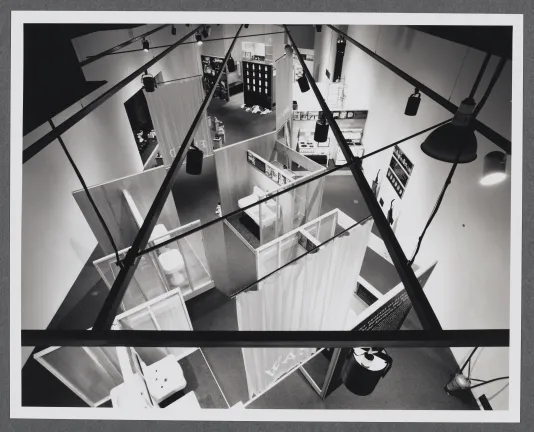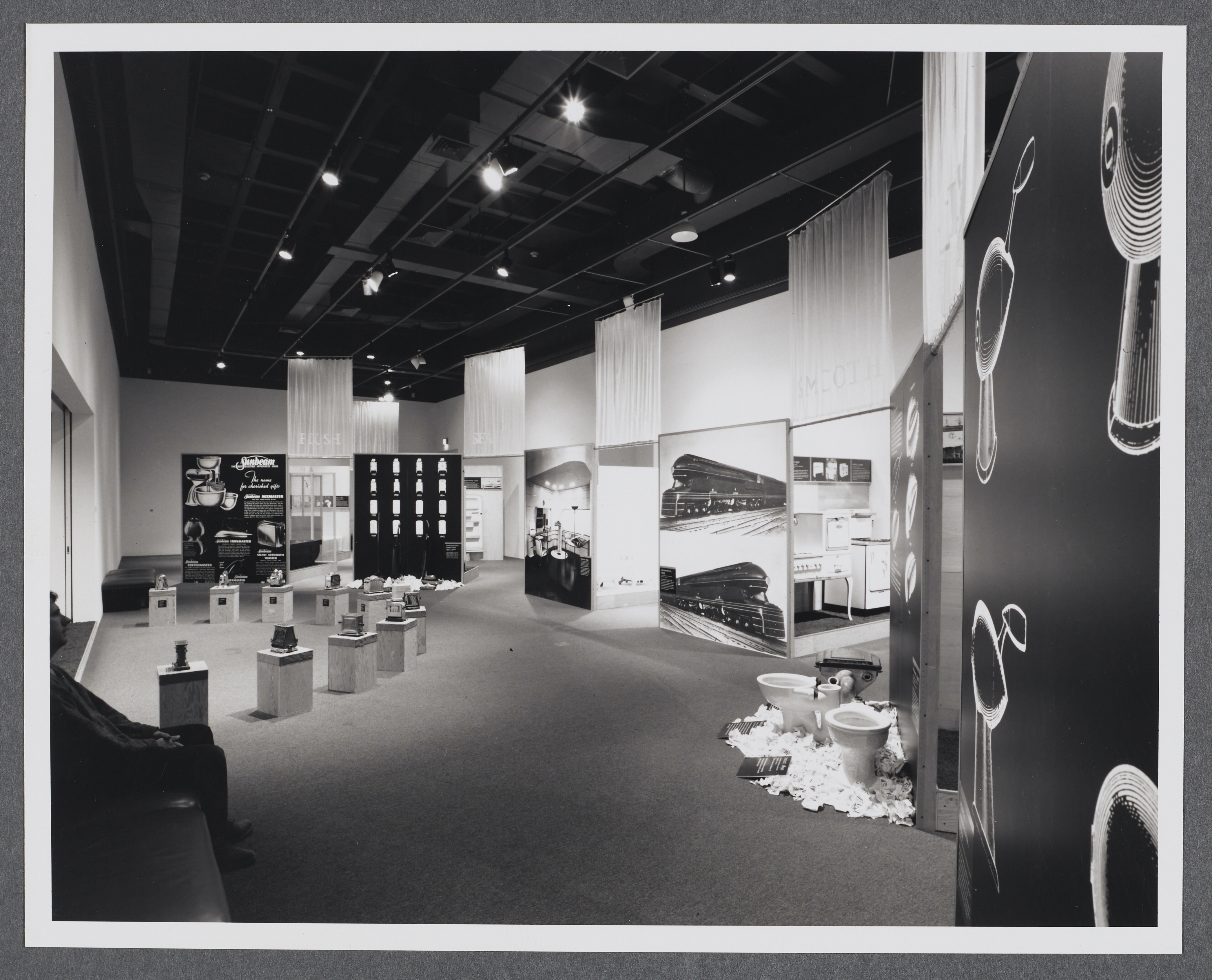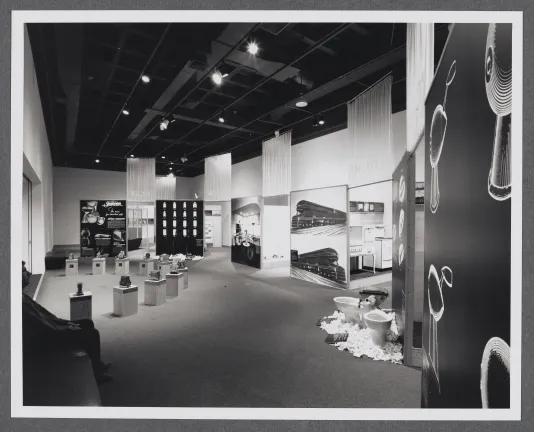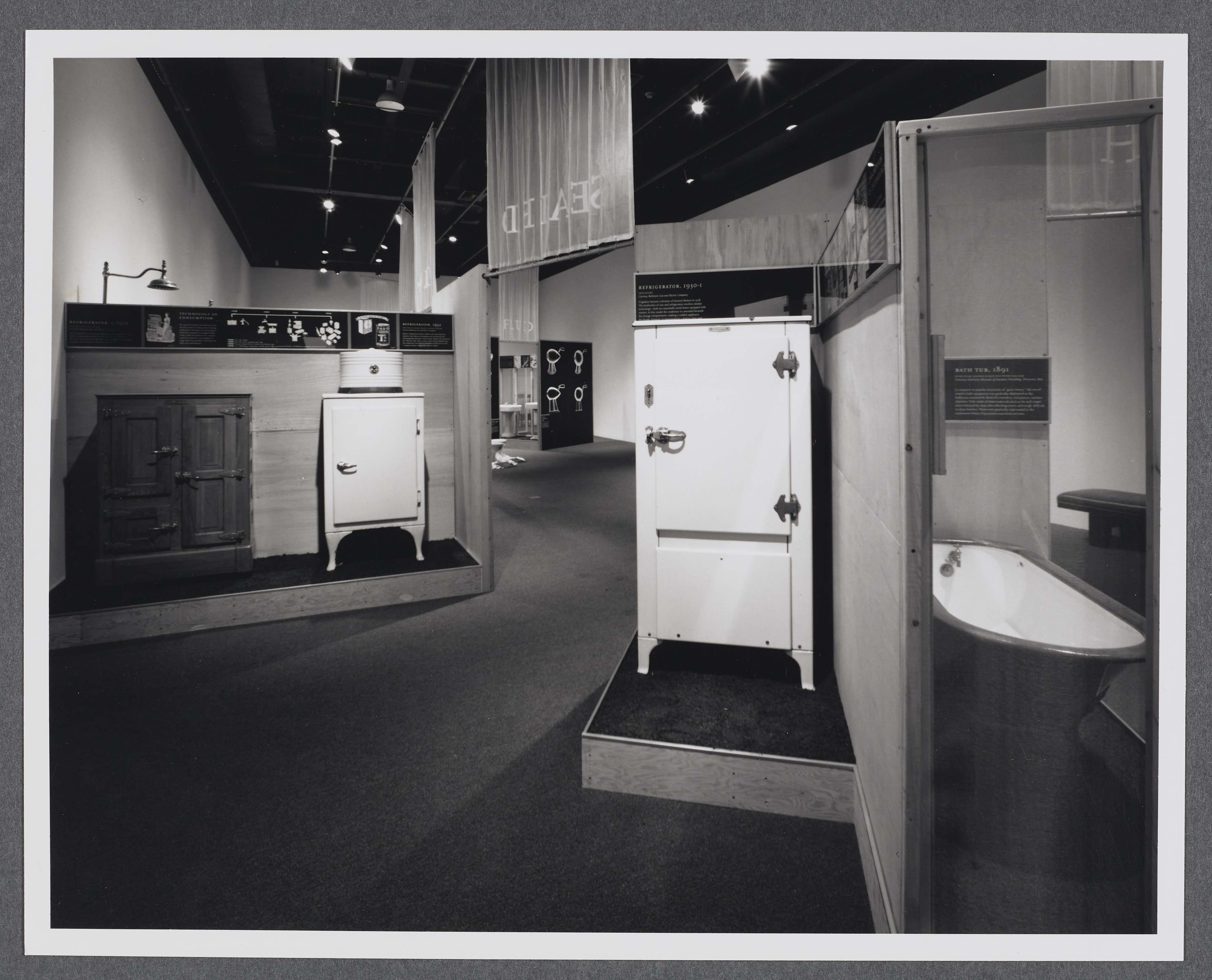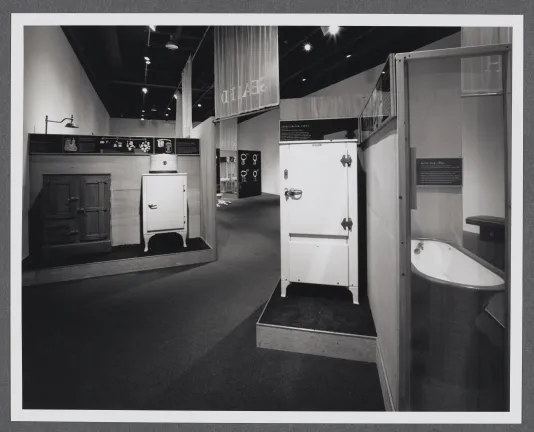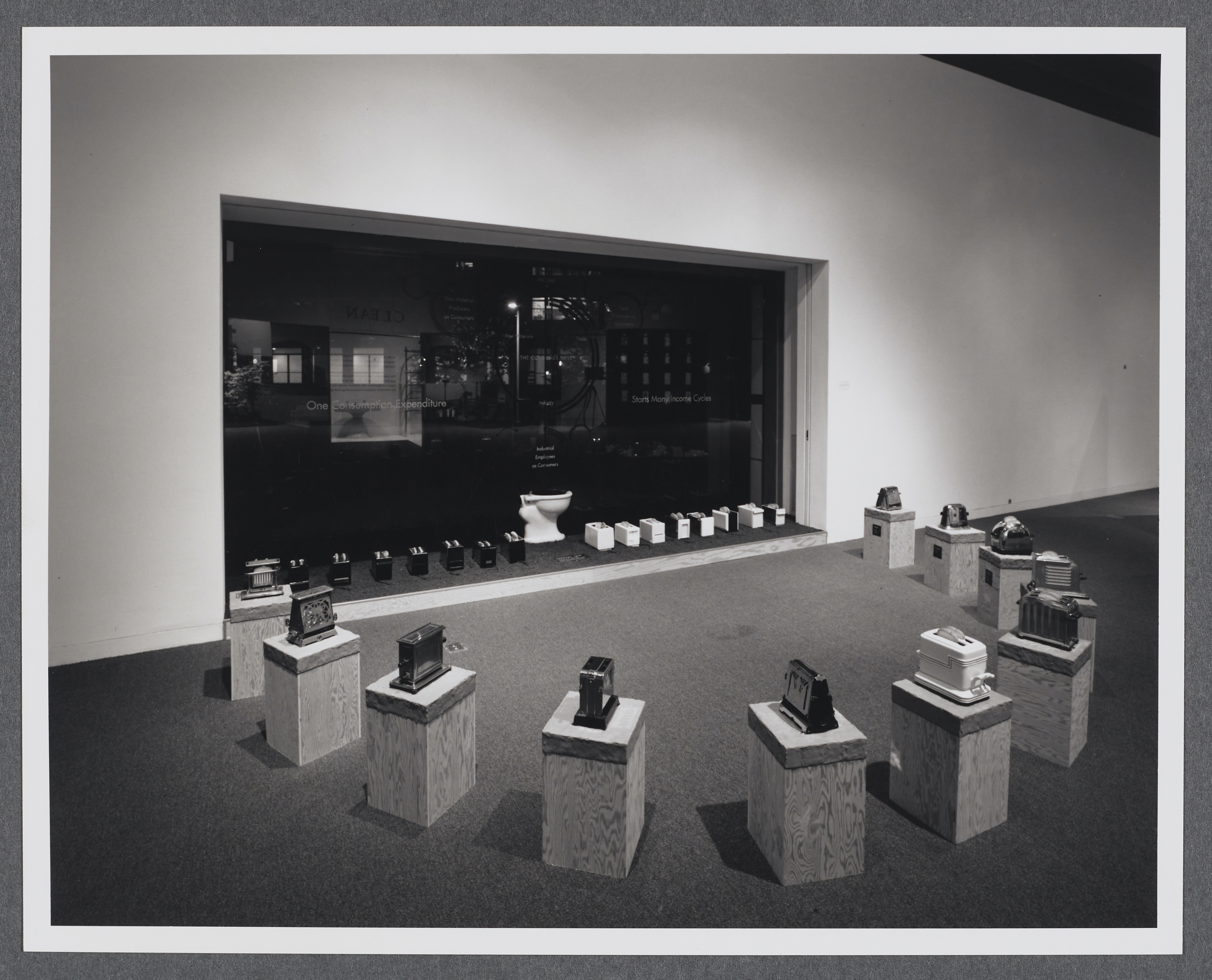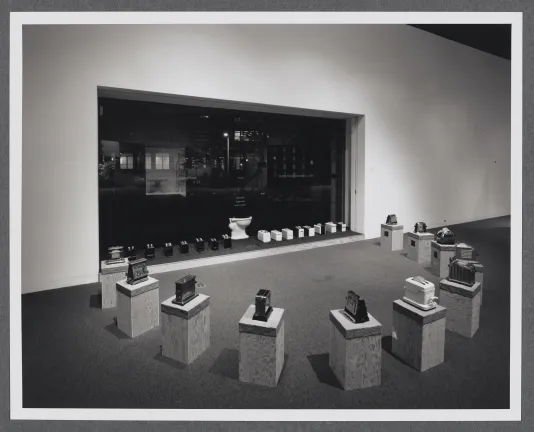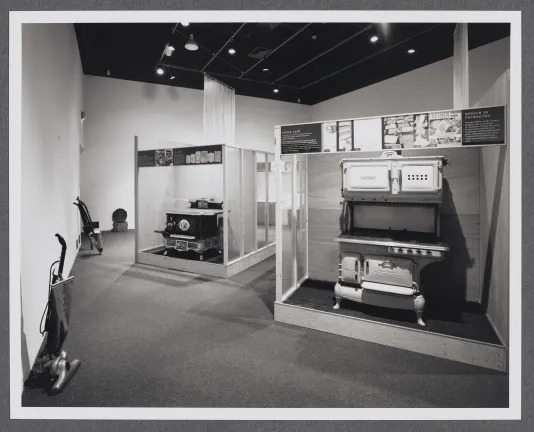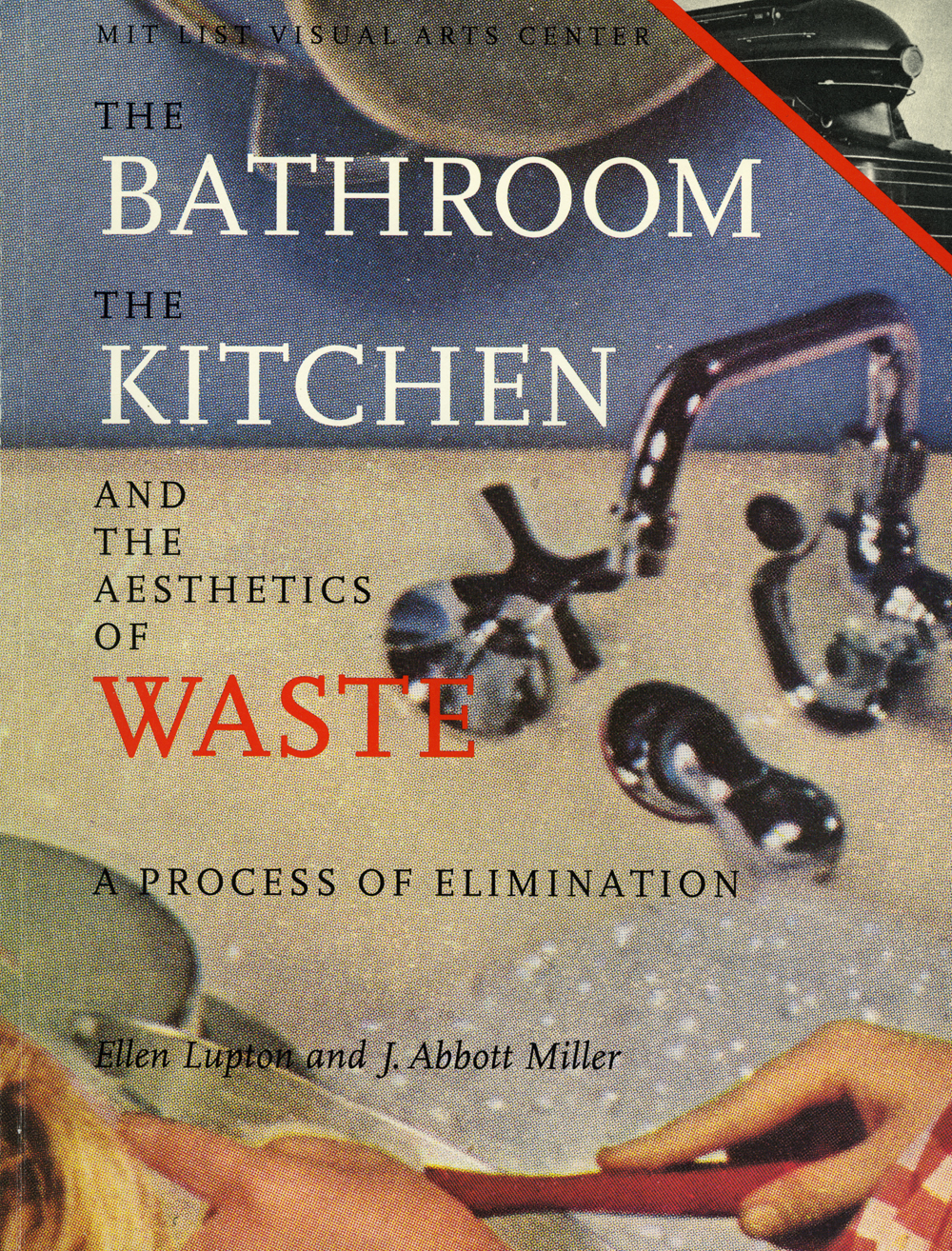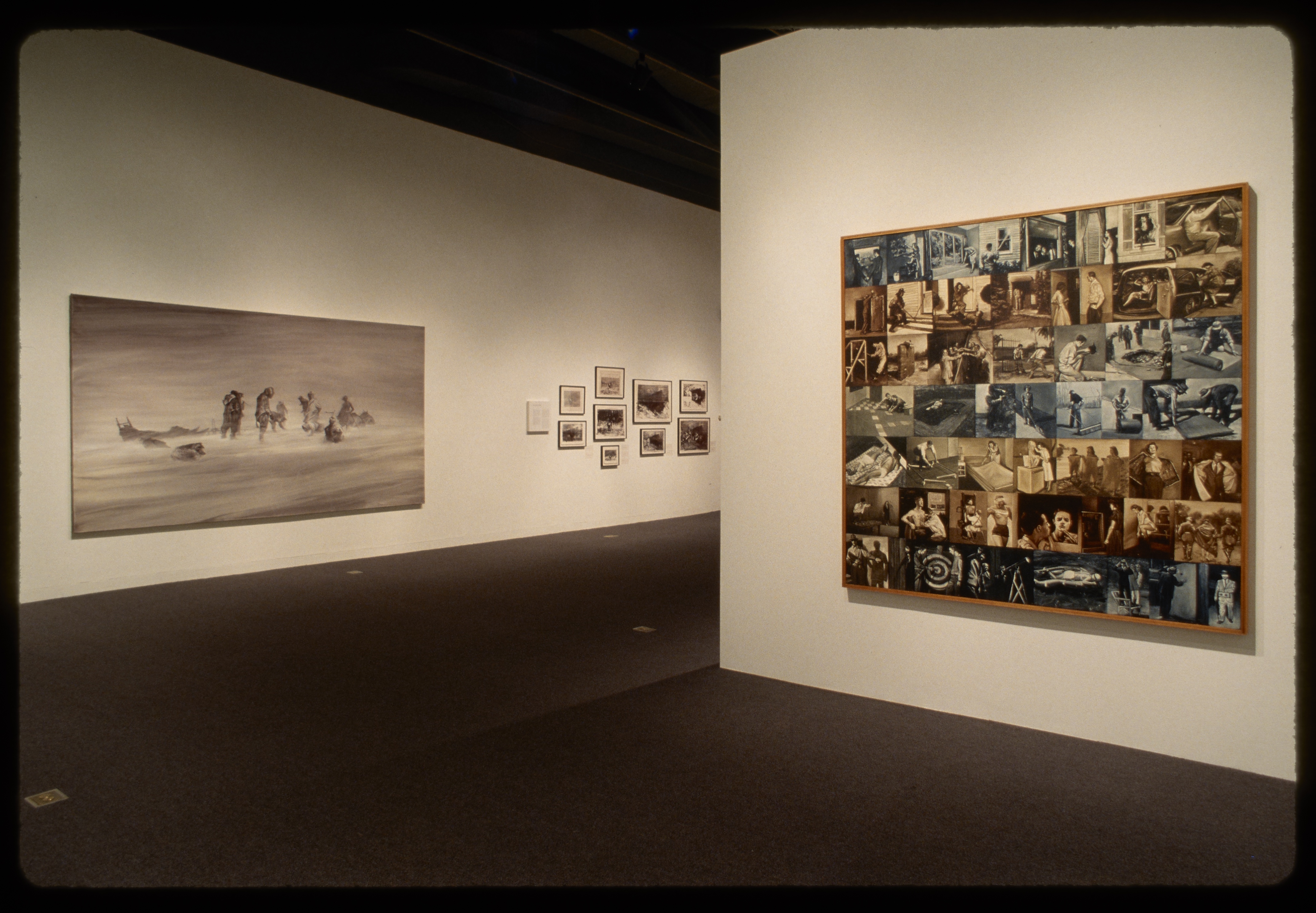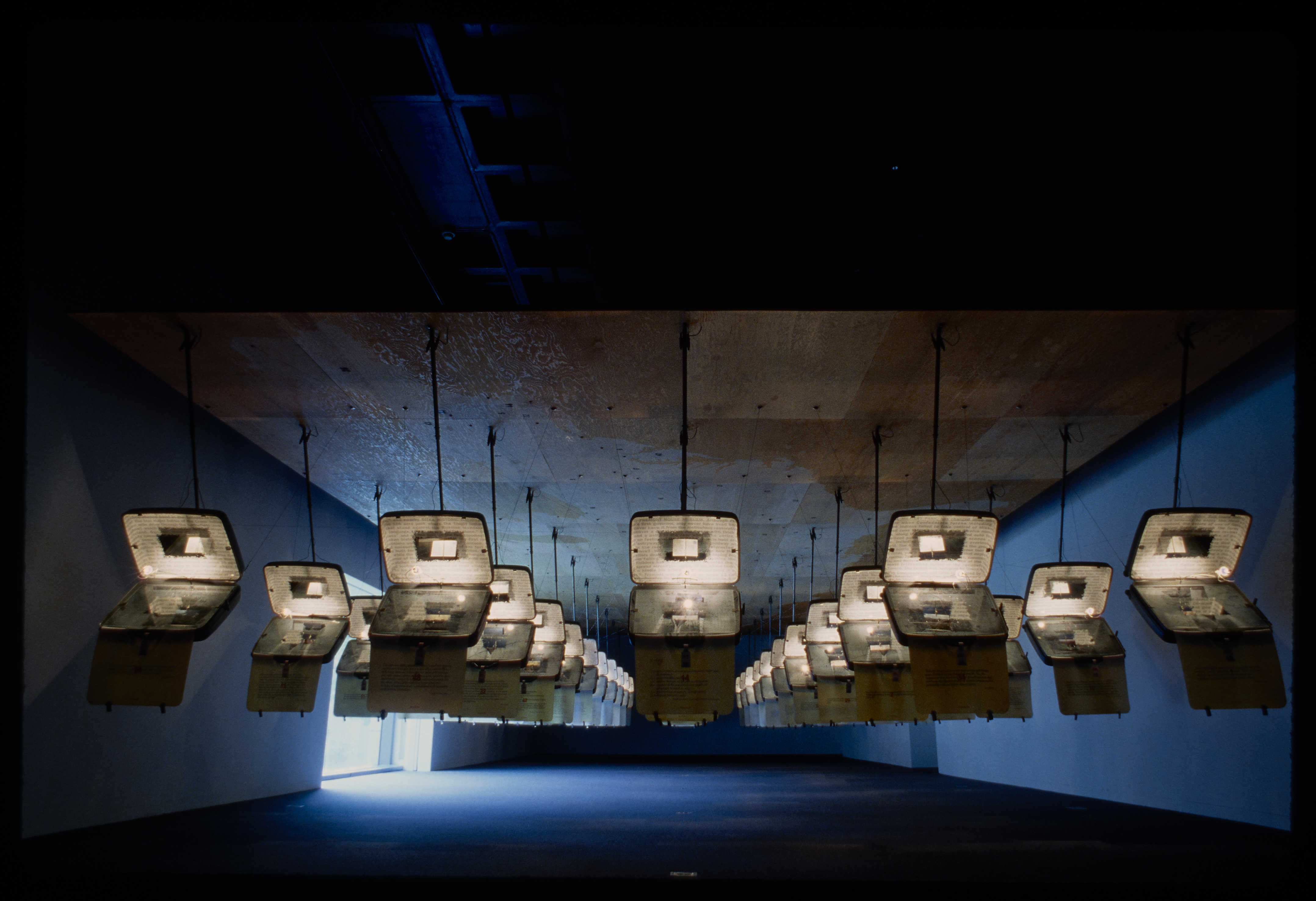Installation view, The Process of Elimination: The Kitchen and Bathroom in Modern Consumer Culture, MIT List Visual Arts Center, 1992.
The Process of Elimination: The Kitchen and Bathroom in Modern Consumer Culture
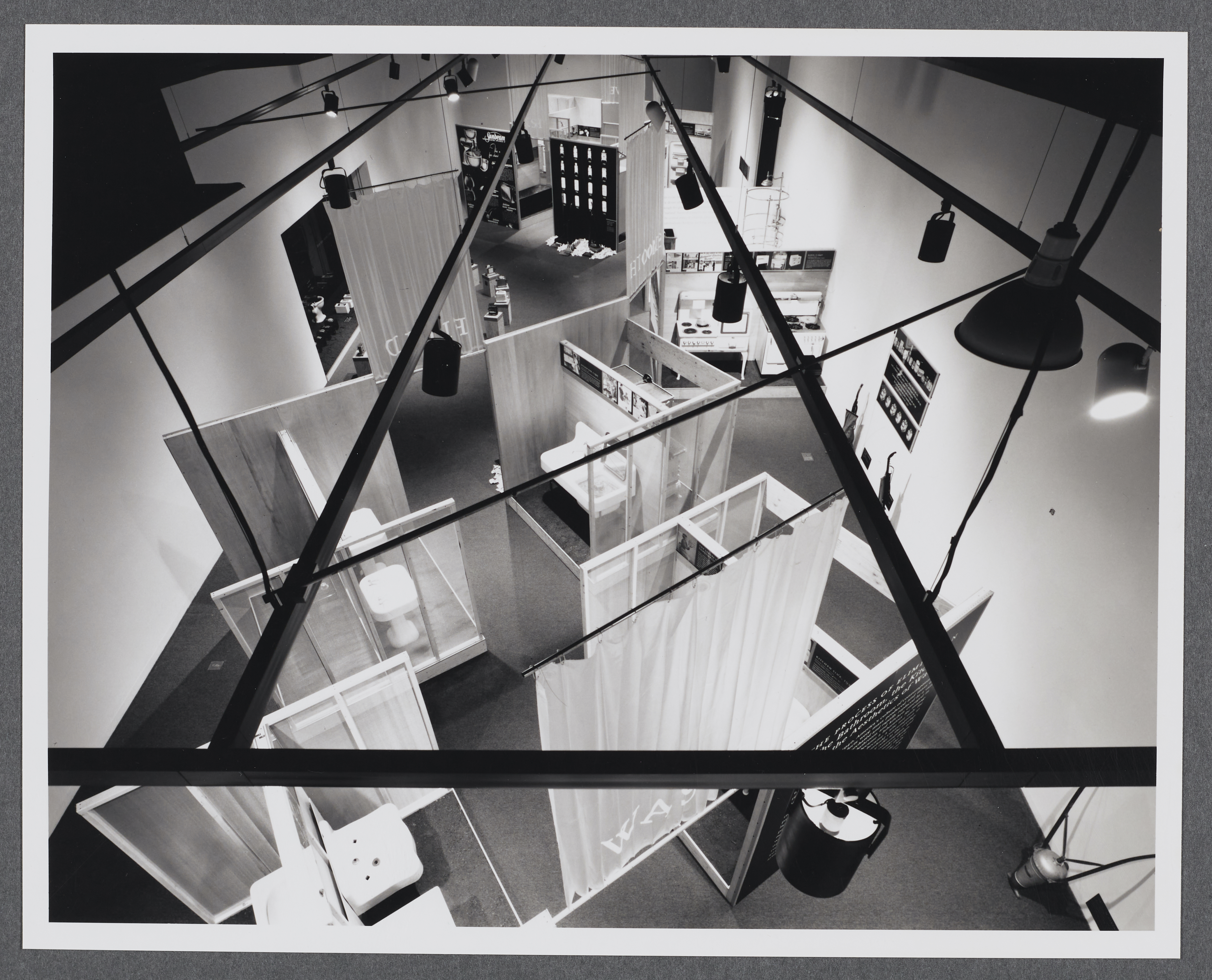
While many design exhibitions focus exclusively on questions of aesthetics and utility, the curators/design historians/designers of this installation, Ellen Lupton and J. Abbott Miller, have attempted to read familiar visual forms in relation to larger issues.
Instead of recreating period rooms, the curators have chosen engaging historical artifacts, relics of the past that remain intimately linked to contemporary practices of consumption.
Between 1890 and 1940, America’s culture of consumption took its modern form: products were mass produced and mass distributed, designed to be purchased and rapidly replaced by a vast buying public. Cycles of economic consumption reiterated the routines of biological consumption, marked by the rise of the modern bathroom and kitchen as newly equipped spaces for administering bodily care. The bathroom became a laboratory for managing human waste, and the kitchen became a site not only for preparing food, but for directing the household consumption at large. The streamlined style of modern design, which served the new ideals of bodily hygiene while engaging the manufacturing policy of planned obsolescence, emanated from the domestic landscape of the bathroom and kitchen.
Catalogue available, entitled The Bathroom, The Kitchen, and the Aesthetics of Waste.
